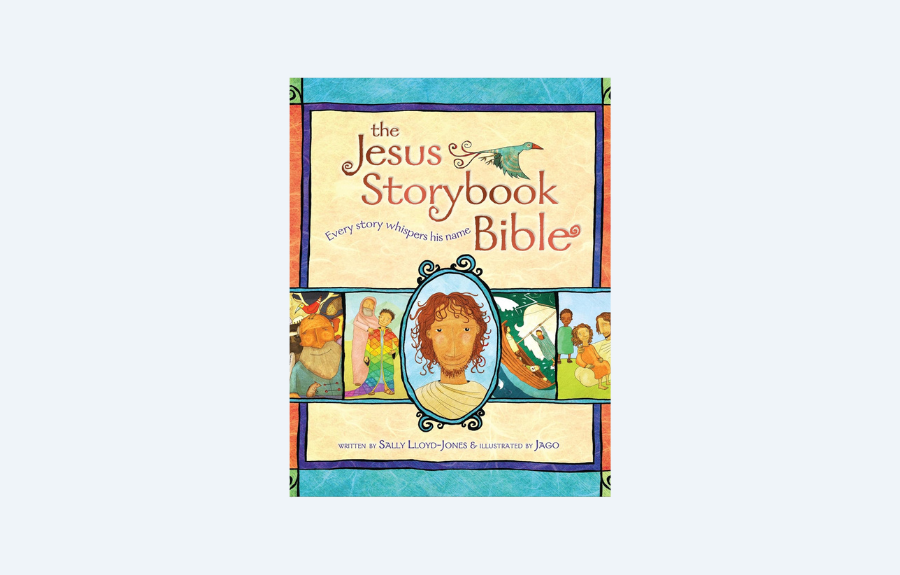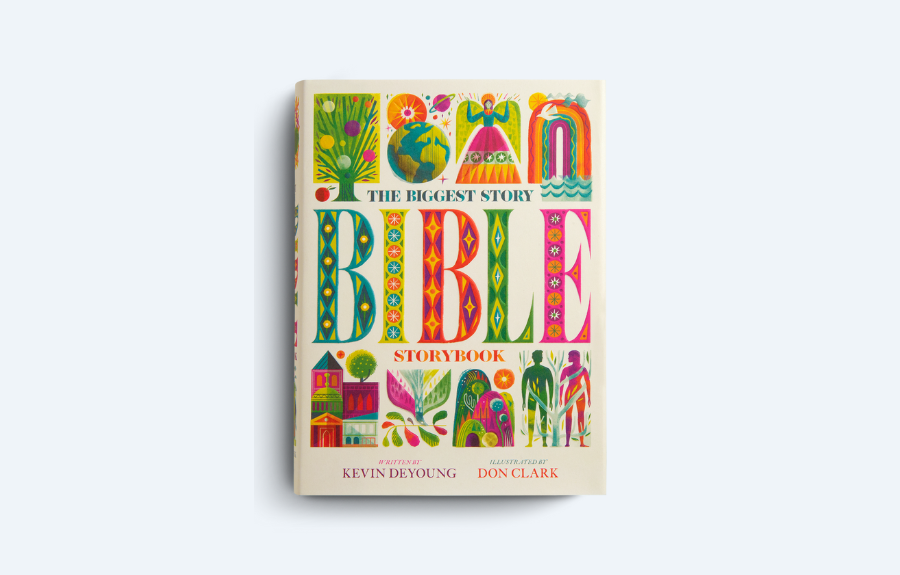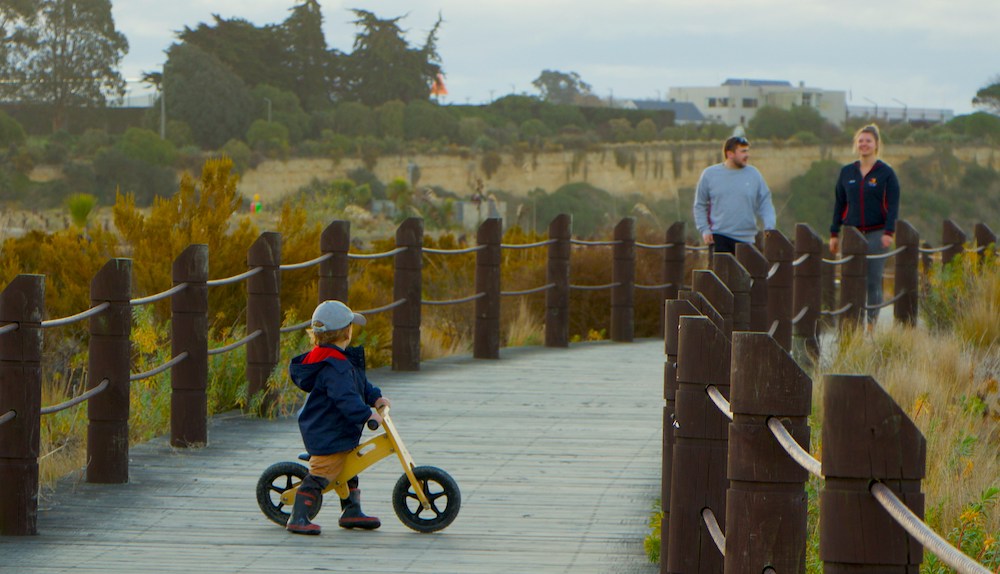If you have every talked with my husband or I, or been to our house at dinner time, or regularly read my writing, then you know that we read out of a Bible storybook every night with our kids. In the five years we’ve been doing this, we’ve read through two different storybook Bibles and I thought it might be helpful to do a comparison of each. While there are many storybook Bible options, these are the two we landed on for various reasons. You can find my full review of The Jesus Storybook Bible below and The Biggest Story Bible Storybook here.
The Jesus Storybook Bible
Author: Sally Lloyd-Jones
Illustrator: Jago
Zonderkidz, 2007
At a Glance
- Age range: Preschool-Age 6
- Number of stories: 44 (21 from the Old Testament, 23 from the New Testament)
- Available in digital or hard copy formats
Pros
- Clearly outlines the Grand Narrative of Scripture and how each Bible story points to Jesus.
- Includes a good range of familiar Bible stories, while incorporating a few not-so-familiar.
- Writing style is friendly to kids younger than the target age range.
- Illustrations are cute, simpler (as compared to The Biggest Story), and appealing to small children.
- There is a digital version available (the Google Play books version has a read aloud option).
Things to Be Aware Of
- The writer adds some embellishment to the Bible stories that some parents may not appreciate.
- Light on the topic of sin.
- Stories are a bit long for very young children (but not necessarily for the target age range).
Review
In my mind, though it may not be accurage, The Jesus Storybook Bible is the OG of storybook Bibles. (In fact, I know it’s not the OG because I used storybook Bibles when I was a kid.) In my seminary and church circles, long before I had kids of my own, it was the book everyone read with their kids. So it was the natural option for us to read with our kids once we started our family worship routine.
We read The Jesus Storybook Bible for almost four years, and it served our family well. Because we read one story each day and started over once we reached the last story, we were able to read through this book just over 7 times in a year (we take a break from the storybooks in December to do Advent Blocks).
Because we did this, our kids became very familiar with each story. Many of the stories included are the most familiar (Creation and Fall narratives, Noah’s ark, Jonah, Jesus’s birth, crucifixion). Some are not as familiar or popular to include in children’s Bible stories (Naaman, Isaiah, the bleeding woman). I appreciate that this storybook includes enough stories to familiarize the Grand Narrative of Scripture to our children, but not so many as to be overwhelming or hard for them to remember.
We started this practice when our oldest was approximately 14 months old and I was pregnant with our youngest. They were far off the target age range, so the length of the stories was a struggle for them. However, by the time they reached the target age, they were already very familiar with the length of each story, the content of the stories, and could recognize them before we started reading.
When I recommended this book while speaking to a small group, a grandfather approached me afterwards with a question concerning what he had heard someone else say about how much creative license the author takes with the Bible stories. I believe it’s a fair assessment to say that there is some embellishment added to many of the stories that we have often noted while reading the book to our kids. However, as this book is 1) not the actual Scriptures; 2) does not change the overarching message of the Scriptures and 3) is a tool to help children understand the Bible’s structure, content, and message, the level of embellishment is not so much that we had concerns over confusing our children. (Consider Eugene Peterson’s The Message Bible as an adult comparison.) This may bother some parents, so that’s why I’ve included this as a critique.
Additionally, in the last year, our children have turned a corner in their understanding of our worldview that ultimately led us to switch which storybook Bible we used. The Jesus Storybook Bible served us so well for the first years of this practice, but we began to desire a book that would help us dig more deeply into the issue of sin (bummer, I know). Though the book does include the Fall narrative and contains illusions to the curse and ramifications of sin, The Jesus Storybook Bible is not as clear as we would like it to be on this issue. To be clear, we were not looking for a hellfire and brimstone approach, but we do believe our kids are old enough now to begin helping them understand the sin nature that affects them (and everyone), and their desperate need for Jesus to save them.
Overall, we are so thankful for The Jesus Storybook Bible and the amount of time we spent reading through it with our children. We believe it laid a great foundation for our children to begin understanding the Bible and even seems to have created a desire in our oldest to begin reading the actual Bible. If you are looking for a baby shower gift or storybook Bible to read with your own children, this one is a top choice.
For comparison, read this article for my review of Kevin DeYoung’s The Biggest Story Bible Storybook.





